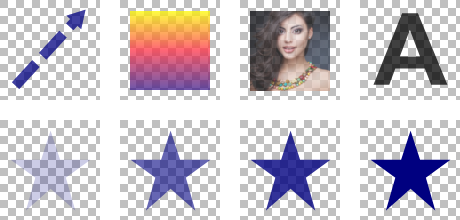 |
|
Tween with
|
 |
| Use this option to choose where to add frames:
|
 |
 |
|
Next Frame
|
 |
| Adds frames between the selected frame and the following frame. This option is not available when you select the last frame in the Animation palette.
|
 |
 |
|
First Frame
|
 |
| Adds frames between the last frame and first frame. This option is available only if you select the last frame in the Animation palette.
|
 |
 |
|
Previous Frame
|
 |
| Adds frames between the selected frame and the preceding frame. This option is not available when you select the first frame in the Animation palette.
|
 |
 |
|
Last Frame
|
 |
| Adds frames between the first frame and last frame. This option is available only if you select the first frame in the Animation palette.
|
 |
 |
|
Frames to Add
|
 |
| Use this option to choose the number of frames to add.
|
 |
 |
|
Delay
|
 |
| This option allows you to specify a delay-the time that a frame is displayed-for single frames or for multiple frames in an animation. Delay time is displayed in seconds.
|
 |
 |
|
All Layers
|
 |
| Varies all layers in the selected frame or frames.
|
 |
 |
|
Selected Layer
|
 |
| Varies only the currently selected layer in the selected frame or frames.
|
 |
 |
|
Position (Vector Layers)
|
 |
| Varies the position of the layer’s content in the new frames evenly between the beginning and ending frames.
|
 |
 |
|
Angle (Vector Layers)
|
 |
| Varies the angle of the layer’s content in the new frames evenly between the beginning and ending frames.
|
 |
 |
|
Opacity
|
 |
|
 |
|
 |
| Varies the opacity of the new frames evenly between the beginning and ending frames. Opacity is the opposite of transparency. If something has an opacity value of 100%, that means it’s completely visible. An opacity value of 0% indicates that an object is completely transparent.
|
 |